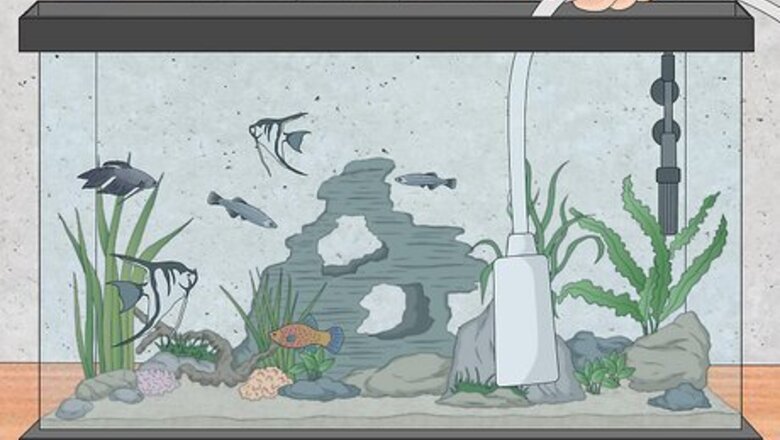
views
X
Research source
By measuring your tank's water and making the necessary adjustments, you can help lower ammonia levels back down to a safe, manageable level for your fish.
Lowering Ammonia Levels in the Fish Tank
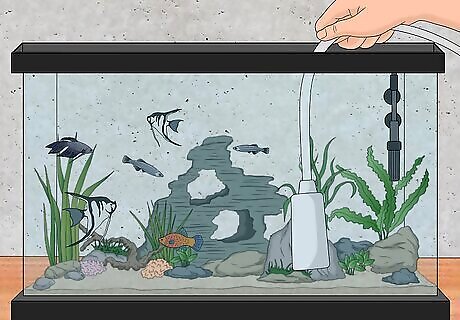
Do a partial water change. Partial water changes are an excellent and efficient way of reducing ammonia levels and maintaining a clean tank for your fish. You should aim to do a partial water change about once a week, though you may need to do it more often, depending on your tank's conditions. A good way to check if you need to do partial changes more frequently is by stirring up the substrate gravel with a fish net. If a lot of debris floats up, it's a good sign you're not changing the water often enough. Let fresh water sit out overnight to dechlorinate, or treat the fresh water with a dechlorination product. Wash your hands and make sure you've washed away all residue of soap, lotions, and other potential contaminants. Dry your hands with a clean paper towel. Disconnect any electrical appliances near the fish tank to prevent any risk of accidental electrocution. Wait to reconnect those appliances until you've finished changing the water and checked that everything is dry. For an otherwise healthy tank, you can aim to replace about 30% of the water. In a 10 gallon (37.9 L) tank, that means replacing 3 gallons (11.4 L) of water. You don't necessarily need to remove the fish for a partial water change. Just be careful as you put your hands in the tank so you don't startle the fish. Scrape off any algae that's grown on the walls of the tank. You can buy a specialized tool for scraping algae, or simply use an old credit card. Use a siphon tube to drain out 30% of the old water into a bucket or nearby sink. When you've removed enough of the old water, slowly pour in the fresh, dechlorinated water.
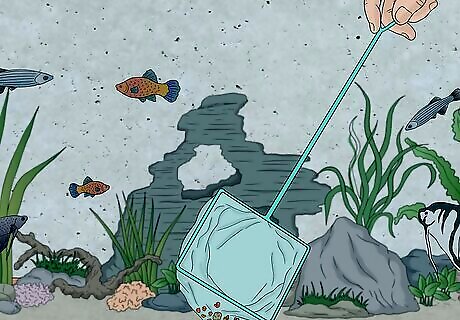
Scoop out any organic matter that shouldn't be there. Decaying organic matter is a large factor in elevated ammonia levels. By using a fish net to scoop out anything that shouldn't be there (basically anything but the living fish and plants you want in the tank), you can help lower ammonia levels and prevent them from rising. Uneaten food is a large contributor to ammonia levels. Fish waste can also cause spikes in ammonia as it decomposes. Dead plant matter or dead fish left in your tank will release large concentrations of ammonia. Try cleaning out the filter in your tank, as this could reintroduce built-up organic matter back into the water. Don't replace the filter pads, though, as you may upset the bacterial balance in the water.
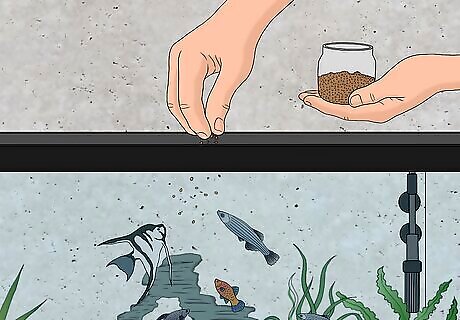
Reduce the frequency and quantity of food given. If your fish leaves behind a lot of uneaten food, that food could be the reason for your tank's elevated ammonia levels. By reducing how much food is available in the tank, you'll lower the opportunities for ammonia levels to rise. Make sure your fish is still getting enough food. Talk to a veterinarian or fish expert on how much food your fish needs to stay healthy. Be aware that changing your fish's feeding habits won't reduce ammonia levels that are already high; it will, however, prevent future spikes in ammonia levels once the water has been changed.
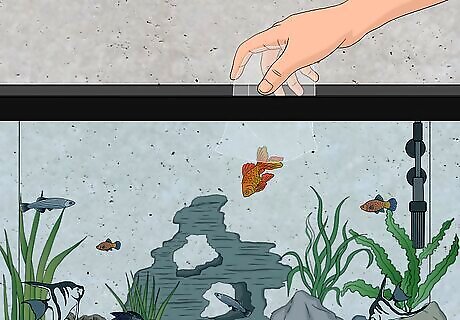
Introduce healthy bacteria to the water. The bacterial colonies that usually line a well-established fish tank's bottom help convert ammonia into its relatively benign nitrogen components. If your tank is new or if the bacterial colony has been drastically reduced, you may be experiencing what some fish experts call "new tank syndrome." Some people introduce bacteria by putting one or two inexpensive fish in the tank so that the fish's waste can bring in bacteria. If going this route, you may use a goldfish for a cold water tank, barbs for a warm tank, or damselfish for a saltwater tank. You can also add healthy bacteria by introducing a handful of gravel from an older fish tank to your new fish tank's bottom.
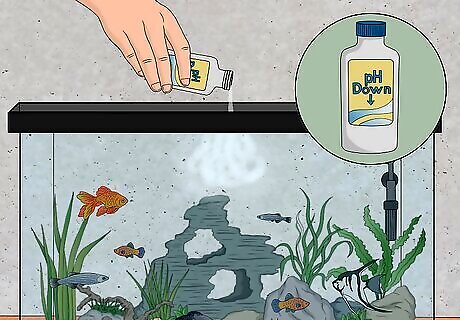
Lower your tank's pH. Ammonia is either un-ionized as NH3 or ionized as ammonium (NH4+). Un-ionized ammonia (NH3) is the form that is toxic to fish, and is generally in greatest concentration when the water's pH is basic (high on the pH scale). Adding chemical pH adjusters (from your local pet store) is probably the easiest way to lower the pH of your tank. Lowering the pH won't remove the ammonia, but it can render it less dangerous if you need to buy some time before you can change the water. One easy way to maintain lower pH levels is to make sure you use actual gravel for the substrate (bottom) of your fish tank. Using crushed coral or coral sand releases calcium in the water that can cause spikes in pH.
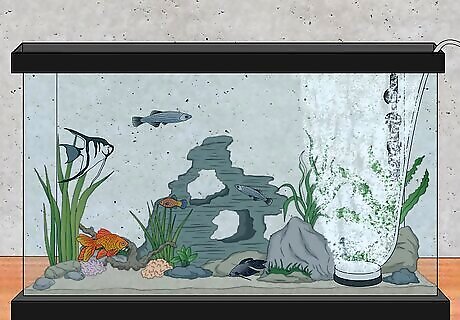
Try increasing aeration of the water. NH3, the form of ammonia that is toxic, is a dissolved gas that permeates the water. By increasing the aeration of your tank's water, it might help diffuse that ammonia gas out of the water and into the air. Aeration won't do much in a large pond, but it might help manage ammonia levels in your fish tank. You can buy an aeration pump at most pet stores or online. Make sure you leave your tank uncovered if you normally have a lid on. As the ammonia gas diffuses, it will need to be able to travel outside of the tank.
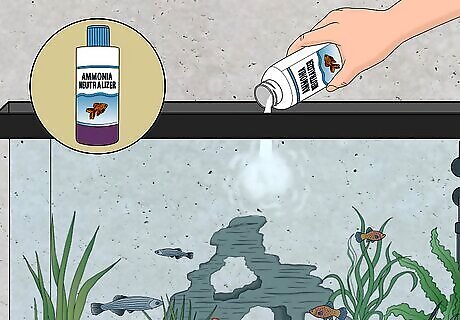
Use neutralizing drops. One way to temporarily fix the ammonia levels in your tank is by using neutralizing drops. You can buy these at most pet stores, or order them online. Neutralizing drops do not actually remove ammonia from the water. Instead, the drops will neutralize the toxic effects of ammonia, rendering it harmless in the water. You'll still need biological filtration (from bacteria) to break down ammonia into nitrite and nitrate.
Identifying the Sources of High Ammonia Levels
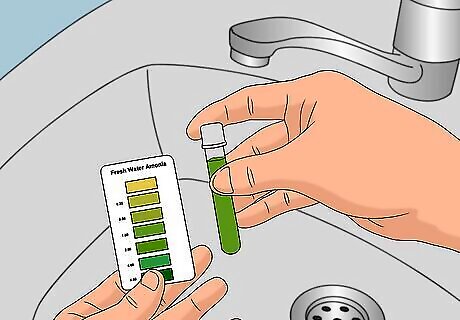
Check the tap water. It's relatively rare that tap water would be significantly high in ammonia. Most municipal water systems test the concentration of chemicals like ammonia to ensure that the water is safe to drink. However, it may be worth checking if you're doing everything else right and the ammonia levels are still not dropping. Use the ammonia testing kit you would use for the fish tank on your tap water. If the ammonia levels are high in your tap water, talk to a representative from your municipal water district.
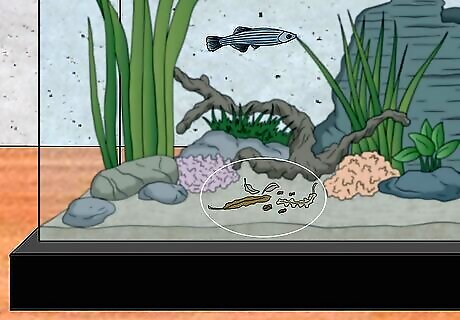
Look for decomposition inside the fish tank. Decomposing material inside the tank is one of the biggest causes of high ammonia levels. By evaluating the contents of your tank's water, you'll have a clearer idea of what needs to be done to correct the problem. Any decomposing organic matter, including aquatic plants and microorganisms, can cause a spike in ammonia levels as protein breaks down. Uneaten food can also cause spikes in ammonia levels as it breaks down in the water. Scoop out any matter that shouldn't be in the tank promptly. Make sure you maintain your tank's regular schedule for changing or partially changing the water.
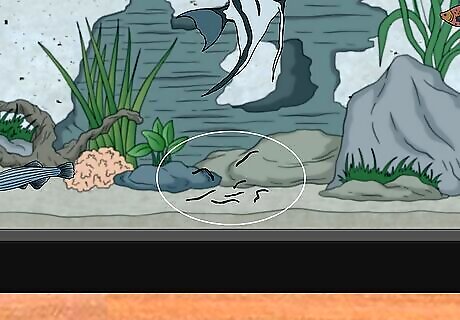
Recognize ammonia excreted by your fish. If you see a lot of fish waste floating around in your tank, it could be the source of your elevated ammonia levels. Your fish's waste will gradually break down, just like decomposing organic matter, causing ammonia levels to rise in the water. You can manage fish waste by scooping out solids whenever you see them and changing or partially changing your tank's water on a regular basis.
Conducting Accurate Measurements for Ammonia
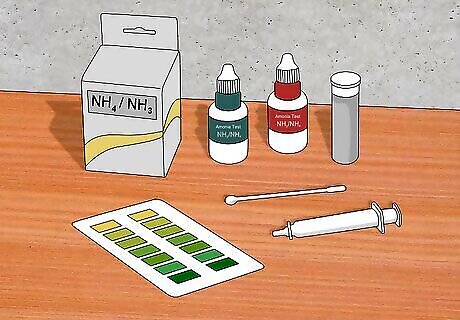
Buy a standard test kit. Most pet stores sell ammonia test kits. These kits check the total ammonia levels (which includes both ammonia and ammonium). The problem with this is that the tests do not distinguish between the two distinct ammonia levels, meaning you may not be able to accurately assess how toxic the water is. As a general rule, if your tank is established (meaning it's been inhabited and has active bacterial colonies), you should not be able to detect any ammonia with a standard kit. If these tests indicate a measurable level of ammonia and you know there is already a healthy bacterial colony and a lack of organic matter, it's most likely a problem with your filter.
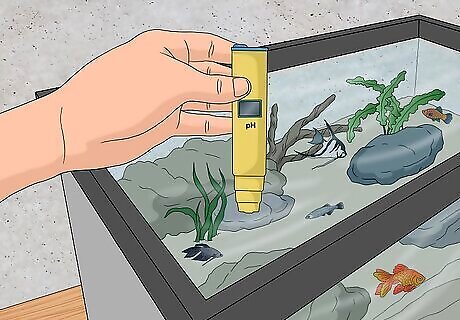
Measure the water's pH. Your tank's pH can directly affect the ammonia levels in the water. By measuring the pH levels on a regular basis, you'll help ensure that ammonia levels are not toxic. The pH of a body of water affects how much ammonia is ionized versus how much remains un-ionized. You'll still need to treat the water beyond adjusting the pH, as acidifying the water will not actually break down the ammonia that's already present.
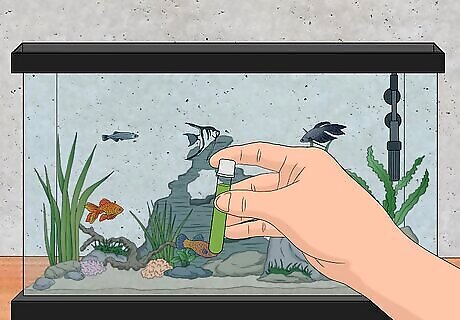
Test the water at the right time. Depending on when you test your tank's water, you might be getting an artificially-high reading. The best time to test the water would probably be right before feeding, as new food has not yet broken down in the water. Ammonia levels reach their peak approximately 90 minutes after your fish have been fed. Testing the water shortly after your fish have eaten (and are producing waste) can give you an inaccurately-high reading of ammonia levels.















Comments
0 comment